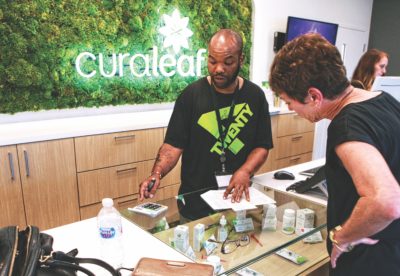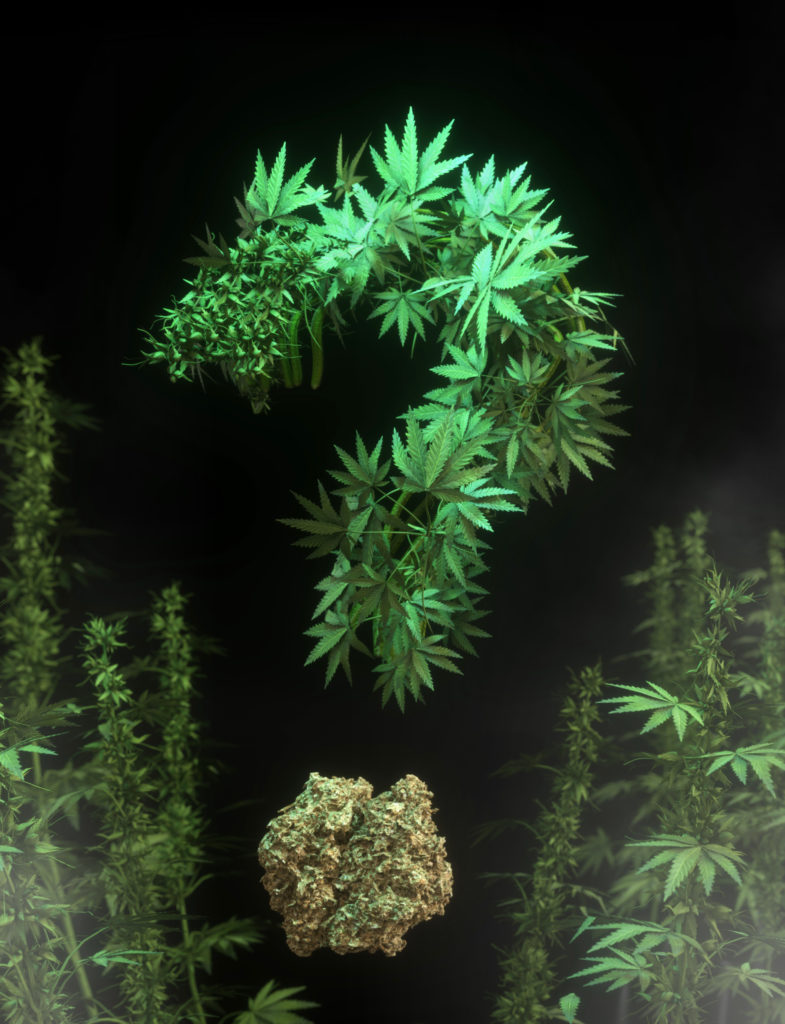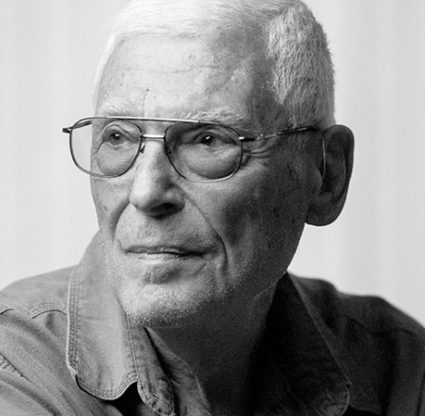Lately, it seems, references to cannabis have been as abundant in media reports as they are at frat parties. We’ll admit it: We at Gulfshore Life were pretty hazy on the ins and outs of medical marijuana, the CBD craze, the hoopla over hemp and the legality of it all. We set out on some research (not of the experiential type, for the record) on these and other marijuana matters. We give you our resulting “pot primer” to clear the air.
What is CBD oil, and why is it all the rage?
Cannabidiol (CBD) oil is extracted from the flowers or leaves of the marijuana or hemp plant. Users (and manufacturers, of course) say it helps with everything from anxiety and depression to inflammation and chronic pain, cancer-related symptoms such as nausea, acne, cardiovascular health, digestive health, neurological disorders and easing the symptoms of drug withdrawals. The FDA—which has only signed off on its use for treating a rare seizure condition—says “prove it!”
Can you get high off CBD?
Not if it comes from low-THC sources.
The marijuana plant has hundreds of naturally occurring compounds. The two best-known are delta-9-tetrahydrocannabinol (THC) and cannabidiol (CBD). THC is the stuff that interacts with the endocannabinoid receptors in your brain and gets you high; CBD triggers no such euphoria. CBD may, however, prompt the body’s endocannabinoid system to work better.
Wait? Did you know we even had a cannabis-named system in the body? You are forgiven if you didn’t; scientists didn’t discover the first endocannabinoid receptor until the late 1980s. The endocannabinoid system helps the body maintain homeostasis by regulating body temperature, mood, sleep, appetite, digestion, pain, reproduction, inflammation, and sense of pleasure and reward, among other things. That’s why researchers of both the mainstream and the holistic variety are investigating CBD as a means of boosting the system to maximum efficiency.
Is CBD legal?
You’d think so, given the number of “CBD Oil Sold Here!” signs throughout Southwest Florida.
Surprise! Those retailers were ahead of their time—and ahead of the law. As we wrote this piece, lawmakers in Tallahassee were debating legislation for an industrial hemp program, which would include the legalization and oversight of CBD. “Once a hemp bill is passed by the Florida Legislature, and the U.S. Department of Agriculture approves our state hemp program plan, CBD products will become legal for sale in Florida. A top priority for Commissioner Nikki Fried is ensuring that CBD products, when legal for sale, are fully tested, regulated and safe for consumption by Floridians,” Department of Agriculture and Consumer Services Press Secretary Max Flugrath wrote us when we asked about CBD legality.
Previously, state statute allowed for industrial hemp pilot projects yielding products containing 0.3 percent or less THC. Using that definition, the Lee County Sheriff’s Office told us that it will not scrutinize businesses selling CBD oil containing 0.3 percent or less THC, but if retailers are peddling products exceeding that amount, they’re fair game for an investigation. (The state appears to be giving law enforcement agencies some leeway in how they handle CBD, based on Flugrath’s email to us.) The Collier County Sheriff’s Office told us they are waiting on the legislature to clarify the matter and in the meantime will investigate retailers if they receive complaints about products that may not comply with the law.
CBD oil derived from hemp won’t exceed the 0.3 percent THC (see the question below about hemp vs. marijuana). The problem is there’s no quality control mechanism ensuring consumers are getting what they think they’re getting. A University of Pennsylvania study, in fact, found that 70 percent of cannabidiol products sold online are mislabeled and that some 26 percent of those may contain higher THC amounts than the user believes.
Even if Florida writes laws fully sanctioning CBD use, the feds are still frowning upon the stuff. The FDA a few months ago put out a strongly worded statement saying that products claiming medicinal benefit must go through the agency’s drug-approval process before they are marketed in the U.S. Talk about mixed messages!
So, there’s a difference between the hemp plant and the marijuana plant?
Yes! The two come from the same family, Cannabis sativa, but they’re fourth cousins at best. The hemp plant, which grows tall and stocky like bamboo, has mere trace amounts of the high-inducing THC and has been cultivated around the world for thousands of years.
But isn’t hemp illegal in the U.S.?
Not anymore. Just before Christmas, President Trump signed the Agriculture Improvement Act of 2018 (aka the “Farm Bill”), legalizing hemp (with regulations) and prompting farmers—including those in citrus-blighted Florida—to give the crop some serious consideration. This miracle-of-a-plant yields fibers for clothing and for paper; seeds for use in food products (no, not pot brownies, shame on you!); and biofuel. The University of Florida has launched a pilot project testing the feasibility of growing hemp in various regions of the state. A newly appointed state director of cannabis is charged with, among other things, helping develop a hemp industry. And, as discussed, the legalization of hemp is opening the door to an even bigger CBD market.
Let’s talk about medical marijuana. How many pot-smoking Floridians are out there now?
Whoa, hold on. We’re guessing relatively few are smoking it, because smoking was illegal—even for medical marijuana cardholders—until March 18, when Gov. Ron DeSantis signed Senate Bill 182 into law. Other methods of taking medical marijuana include ointments, pills, edibles and vapors.
As of March, 197,107 Floridians had active medical marijuana cards.
How do you qualify?
As defined by statute, there are 10 official diseases that can get you a card: cancer, epilepsy, glaucoma, HIV, AIDS, post-traumatic stress disorder, amyotrophic lateral sclerosis (ALS), Crohn’s disease, Parkinson’s disease and multiple sclerosis (MS). But, let’s face it. If you don’t meet those criteria, you may slide into provisions like these: terminal illness; “medical conditions of the same kind or class as or comparable to those above”; “chronic nonmalignant pain caused by a qualifying medical condition or that originates from a qualifying medical condition and persists beyond the usual course of that qualifying medical condition.”
Disclaimer: Those last two come straight from the state. We’ll leave it to you to find someone to translate bureaucrat-ese and figure out if your condition qualifies.
So, which doctors can sign off on marijuana usage?
Not your primary care physician or specialist—unless he or she has gotten state-certified to do so. And many of them have. You can find a full list of certified doctors at the Florida Office of Medical Marijuana Use under the state Department of Health.
If your doc’s not in the game, you can visit one of the dozen or so marijuana clinics in Lee and Collier—places with names like Dr. Green Relief, Liberate, and Caring Cannabis Center. For a fee, usually around $200 (fully refundable if you don’t qualify!), a clinic doctor will assess you and your health record to see if you meet the state criteria for medical marijuana.
We haven’t gone undercover (hmmm, maybe a follow-up story?), but we do wonder about the rigors of the review process. Here are some of the statements we found prominently displayed on clinic websites: “We’re here to support patients in getting the help they deserve as quickly as possible.” “(You) will be evaluated by a compassionate and well-qualified doctor that understands the benefits of recommending medical marijuana for your condition.” “Have we become numb to the warnings on drug commercials? … One patient at a time, we are committed to changing the world for the better and ending the tragic history of legalized chemical poisoning.”
In the first three months of the year, the number of Floridians with active medical marijuana cards jumped by 32,715.
Once you get a card, where do you get the actual marijuana?
You must visit a dispensary, also known as a marijuana treatment center. In Southwest Florida, two opened right away in Fort Myers: Curaleaf and Trulieve. More recently, three dispensaries announced their intention to open in Bonita Springs—Liberty Health Sciences, Curaleaf and Surterra Wellness—now that the city has ended its moratorium on dispensaries. The cities of Cape Coral and Marco Island allow them, but as of March, no company had applied to open up shop in either municipality.

What about Collier County dispensaries?
Sorry, Collier residents. Buckle up and head north (or send in your delivery order to Lee treatment centers).
State lawmakers gave counties and municipalities two options for dealing with dispensaries: ban ’em outright or treat ’em like pharmacies. That means dispensaries could be placed in areas zoned for pharmacies if local goverments amend their zoning ordinances to allow for them. The Collier County Commission thus far has not gotten the four of five votes needed to change the land-use policies. A major hang-up: State law doesn’t allow local governments to impose any additional regulations on dispensaries. It’s either all or nothing. The City of Naples and Village of Estero also don’t permit the treatment centers.
Can’t I just skip the whole dispensary thing and grow my own?
No. You may have a medical marijuana card and a green thumb, but it’s illegal to grow your own.
Is it true the state is putting the kibosh on new dispensaries?
When the law was written, it capped the number of treatment centers a licensed medical marijuana business could operate at 25. The cap expands by five for every 100,000 new patients. (Currently, each company can operate 35.) Each company must spread its dispensaries across five regions. Trulieve, one of the nation’s biggest medical marijuana firms, has challenged the cap. In early April, a settlement with the state allowed the company to expand to 49 dispensaries.
Is recreational marijuana simply a matter of time?
Gulfshore Life, sadly, is not in possession of a crystal ball. So far, 10 states have fully legalized marijuana (in 23, it is partially legalized). Now, if you ask John Morgan, the personal injury attorney behind the medical marijuana amendment, if Florida is going the way of California, Nevada, Vermont and their free-for-all brethren, his answer is probably, “Heck, yeah.” Last June, he tweeted: “I’m going to look at starting a fund where we all can donate to get full marijuana legalization on the ballot in 2020.” Let’s just say we would be more surprised if he didn’t pull it off than if he did. In the meantime, House Bill 1117 and Senate Bill 1780 would legalize marijuana for adult use. We aren’t holding our breath on those.
Hemp aside, is marijuana the next big investment boom?
Well, if we were entrepreneurs, we’d certainly be paying attention!
Marijuana sales in Colorado, where the drug is fully legal, topped $6 billion between 2014 and 2018, according to the state’s Department of Revenue. In 2017, Colorado residents and visitors consumed 208 metric tons of marijuana, according to a state-commissioned study by the Marijuana Policy Group.
In Nevada, sales exceeded state expectations by 30 percent in the first year of full legalization. That state saw $425 million in recreational sales, another $105 million in medical marijuana and marijuana goods and accessories, and $70 million in tax revenue (alcohol sales, by way of comparison, yielded $49 million).
A word of caution, however: California, which had expected to cash in on marijuana taxes, has cut its projected profits by 50 percent to $355 million for the first six months of 2019, the Associated Press reports. Go figure—Californians have figured out it’s a heck of a lot cheaper to buy weed on the black market than on the heavily taxed legal one.
Industry groups have wasted no time infiltrating the Sunshine State. You can go on to the site potguide.com/florida and find a seminar on how to get into the biz. An organization called Career Extracts in March hosted “Florida’s Largest Cannabis Industry Career Fair” in Miami, recruiting people for jobs in “cultivation, extraction, processing, budtenders, marketing, accounting, delivery, trimmers, product development, formulation scientists, organic chemists and so much more.”
The state is ready to cash in, too. According to the Department of Agriculture and Consumer Services, medical marijuana alone is expected to have $1.6 billion in economic impact and create more jobs than the manufacturing sector by 2020.
With so many states legalizing pot, can we consider it safe to use?
Safety is in the eye of the beholder, we suppose, and if you dig around the internet you’ll find whatever it is you want to find is affirming or negating its medicinal properties. We can tell you a few things for sure:
1. Cannabis in any form does not have FDA approval to treat anything unless you: suffer from certain types of seizures; have AIDS and are suffering from “wasting syndrome”; or are suffering from chemotherapy-related nausea and vomiting. There are just four FDA-approved drugs derived from marijuana or synthetic THC.
2. If you want to play “pick your poison,” you might decide that pot is a safer alternative to opioids. Recent medical studies have found that in states where medical marijuana is permitted, doctors are writing fewer prescriptions for opioids, presumably because they’re encouraging patients to try marijuana before pain pills. Research also shows that in these states, fewer people are being admitted to the hospital for opioid disorders and, in some, the opioid overdose death rate is falling.
3. Marijuana is addictive. About 30 percent of those using it may have some degree of marijuana use disorder, according to the National Institute on Drug Abuse. Teens who use are four to seven times more likely to develop a marijuana use disorder than adults.
The National Academies of Sciences, Engineering and Medicine did a major study on marijuana safety. Much remains unknown, but the organization did offer clarity on a number of questions:
- Yes, it helps reduce chronic pain in adults.
- Yes, it helps alleviate muscle spasms in multiple sclerosis patients.
- Yes, it helps reduce chemotherapy-induced nausea and vomiting.
- No! You should not use marijuana and drive, due to the increased risk of accidents.
- No, kids should not be getting into the stuff: Calls to the poison control center for accidental exposure for children younger than 6 were nearly three times higher in states where marijuana is legal.
- No, smoking pot does not seem to drive up users’ rates of lung, head and neck cancers the way tobacco smoking does—but it does appear to increase rates of chronic bronchitis, cough and phlegm problems if smoked regularly.
- Yes, it does appear to increase the risk of developing schizophrenia, other psychoses, social anxiety and, to a lesser extent, depression. Heavy cannabis users with bipolar disorder appear to have more pronounced symptoms.
- And, yes, that hazy feeling is real. The researchers say learning, memory and attention are all impaired after immediate cannabis use.
Has medical marijuana caused an increase in driving-under-the-influence violations?
It’s a little too soon to tell, the Lee County Sheriff’s Office tells us. Collier County Sheriff hasn’t seen an uptick. Neither agency tracks DUI offenses by the substance impairing the driver, so drawing a line between the two issues may be difficult.





